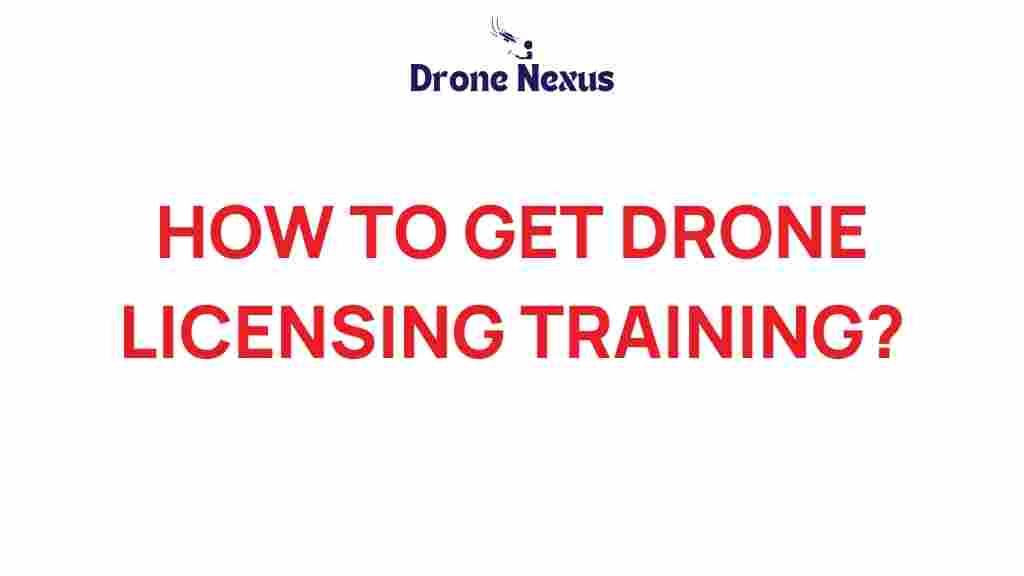Drone Licensing: A Comprehensive Guide to Training and Certification
As the popularity of drones continues to soar, the need for drone licensing has become paramount. Whether you are a hobbyist or a professional looking to incorporate drones into your business, understanding the ins and outs of drone licensing is crucial. In this guide, we will explore the steps to obtain your drone license, the training involved, and tips for success in this rapidly growing field.
Why Drone Licensing Matters
Drone licensing is more than just a regulatory hurdle; it ensures that operators understand safety protocols, airspace regulations, and the technical skills required to fly drones responsibly. Here are some key reasons why drone licensing is essential:
- Safety: Licensed pilots are trained to operate drones safely, minimizing the risk of accidents.
- Legal Compliance: Many countries mandate drone licensing, making it illegal to operate without proper certification.
- Insurance: Licensed pilots are often eligible for better insurance rates and coverage.
- Professional Opportunities: Many employers require a drone license for job applicants, especially in fields like aerial photography, surveying, and agriculture.
The Steps to Obtain Your Drone License
Obtaining a drone license typically involves several key steps. Below is a streamlined process to guide you through the journey of drone licensing.
1. Understand the Regulations
Before diving into training, familiarize yourself with the regulations in your country. In the United States, for example, the Federal Aviation Administration (FAA) oversees drone operations and requires a Part 107 license for commercial use. In other countries, such as Canada and the UK, different regulatory bodies have their own licensing requirements.
2. Choose the Right Training Program
Once you understand the regulations, the next step is to choose a training program. Look for programs that offer:
- Comprehensive coverage of drone operations and regulations.
- Hands-on flight training opportunities.
- Expert instructors with real-world experience.
- Resources for test preparation.
Many training organizations offer both in-person and online options, so choose one that fits your learning style.
3. Study for the Exam
To obtain your drone license, you will need to pass a written exam. Study materials often include:
- Aeronautical knowledge.
- Airspace classification and operating requirements.
- Weather and environmental factors.
- Drones’ performance characteristics.
- Emergency procedures.
Utilize practice tests and study guides to help prepare for the exam. Resources such as the FAA’s official website offer valuable information and study materials.
4. Take the Exam
Once you feel prepared, schedule your exam. The test typically consists of multiple-choice questions, and you will need to score a certain percentage to pass. Make sure to bring valid identification and any necessary paperwork.
5. Gain Practical Experience
After passing the exam, it’s crucial to gain practical flying experience. Consider joining a local drone club or finding a mentor to help you refine your skills. Practical experience will not only bolster your confidence but also prepare you for any real-world challenges you may face.
6. Apply for Your Drone License
Once you have completed your training and gained sufficient experience, it’s time to apply for your drone license. Depending on your location, this may involve submitting an application, proof of training, and passing the exam. Ensure that you comply with any additional requirements specific to your country or region.
Troubleshooting Tips for Drone Licensing Training
As you embark on your journey to obtain your drone licensing, you may encounter challenges along the way. Here are some troubleshooting tips to help you navigate common issues:
- Test Anxiety: If you struggle with test anxiety, practice relaxation techniques such as deep breathing or visualization to calm your nerves before the exam.
- Study Overwhelm: Break down study materials into manageable sections and set a study schedule. Focus on one topic at a time to avoid feeling overwhelmed.
- Flight Practice: If you’re struggling with flying skills, consider enrolling in additional flight training sessions or simulators to boost your confidence.
- Understanding Regulations: If you find regulations confusing, seek out additional resources or mentorship from experienced drone pilots.
Conclusion: Elevate Your Career with Drone Licensing
Obtaining your drone license is a significant step towards unlocking the potential of drone technology in your personal and professional life. By following the steps outlined in this guide, you will be well on your way to becoming a licensed and responsible drone operator. Not only will you enhance your skills and knowledge, but you will also open doors to new opportunities in various industries.
Remember, the journey to drone licensing is not just about passing a test; it’s about developing a thorough understanding of safety, regulations, and operational best practices. Stay informed, keep honing your skills, and embrace the exciting world of drones.
For further resources on drone licensing, check out this comprehensive guide to stay updated on the latest regulations and training opportunities.
This article is in the category Applications and created by DroneNexus Team
